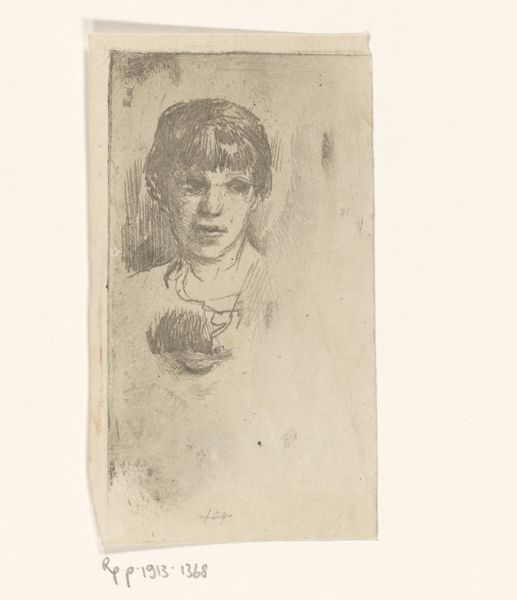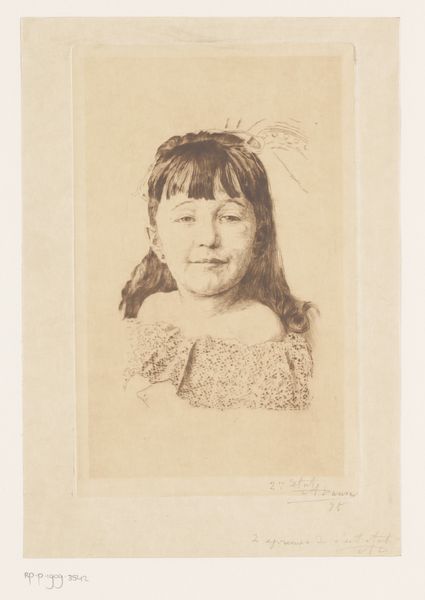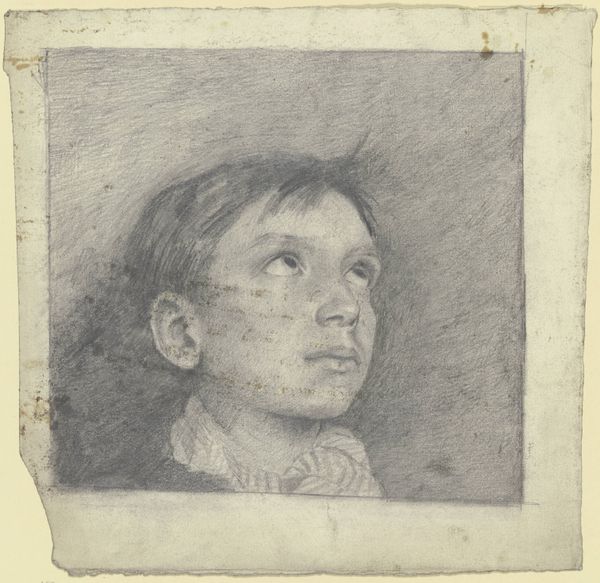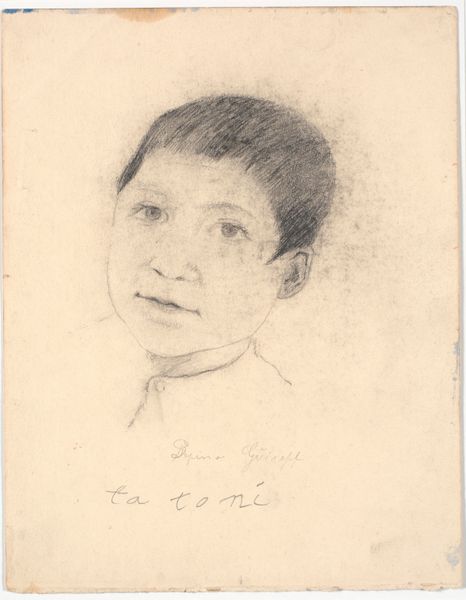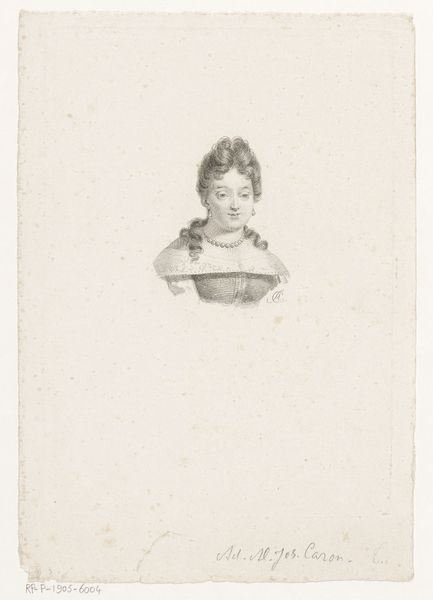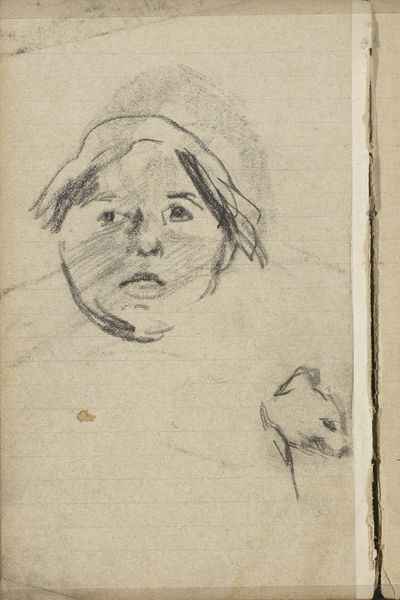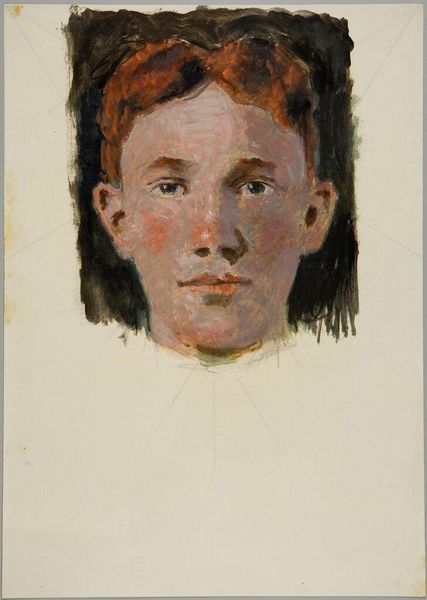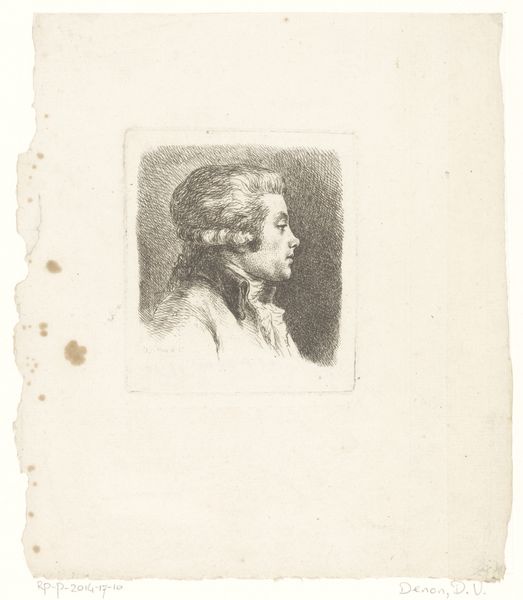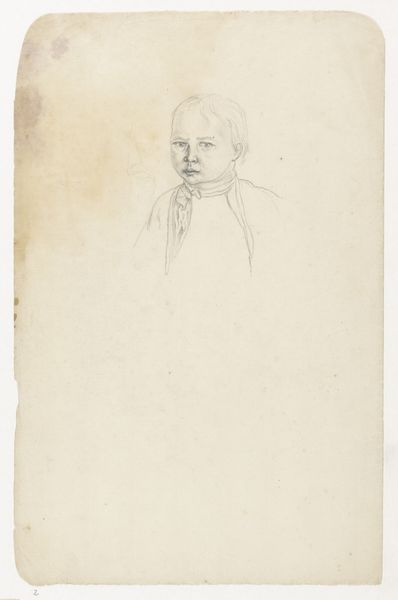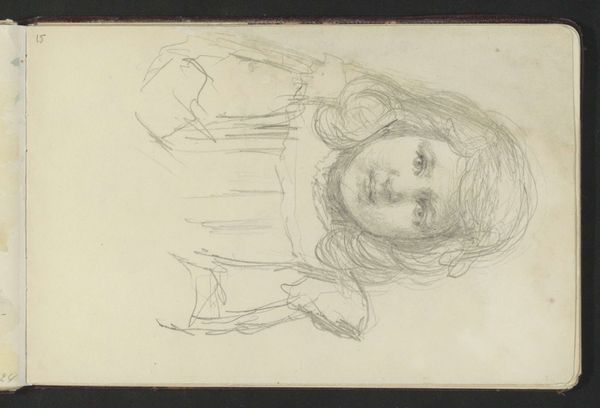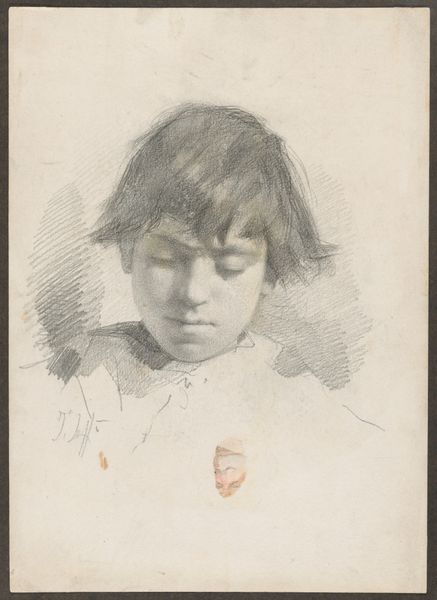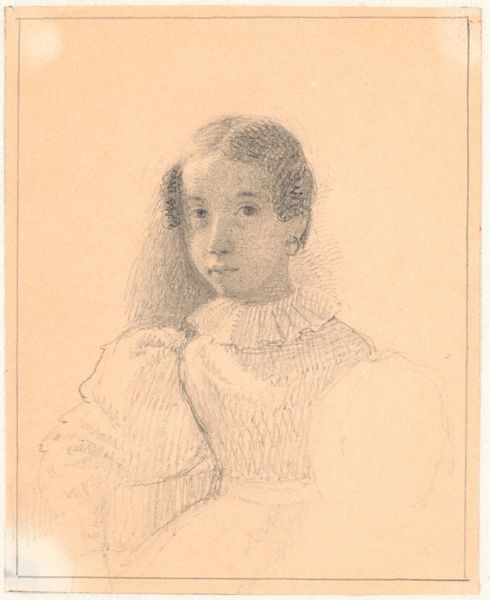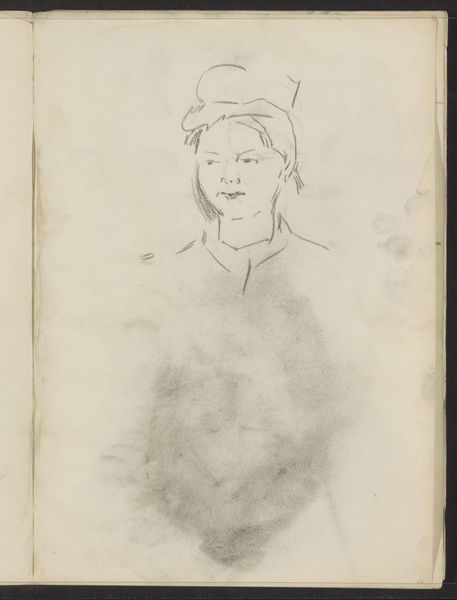
Dimensions: 500 mm (height) x 340 mm (width) (bladmaal), 250 mm (height) x 250 mm (width) (billedmaal)
Curator: This work before us is "Portrait of the Artist's Wife Elise" by Peter Hansen, created sometime between 1909 and 1910. It's a charcoal drawing, very much in the style of realism and impressionism, held here at the SMK, the Statens Museum for Kunst. Editor: Wow, it has such an intimate feel. There's something so raw and unfinished about it. The way the charcoal seems to bleed into the paper around her face creates this dreamy, almost melancholic aura. You get a real sense of quiet domesticity, doesn't you think? Curator: Absolutely. Charcoal as a medium holds particular significance here. Its impermanence mirrors the transient nature of memory, wouldn't you agree? And the subtle blush on her cheeks provides this very faint, hopeful glow that speaks to the intimacies of daily life. I suspect Hansen captured Elise frequently; those lines express immense familiarity. Editor: It's almost as if the portrait is whispering a secret to you. I get this sensation that Elise, sitting for her husband, might be lost in thought, a bit removed. The expression on her face suggests she is either contemplating the burden or glory of being a muse—perhaps both! The dark shading surrounding the head—was that common, like some form of domestic halo? Curator: Symbolically, the shadows definitely add weight. Think about portraiture as cultural memory, about conveying particular attributes, values, statuses. Charcoal's use was widespread by this point for studies and academic exercises; but even as drawings acquired increased appreciation on their own merits, they stood apart. This could imply Hansen saw in Elise a spirit or virtue he wished to emphasize and keep for himself. It may symbolize Elise's role in Peter’s work or creative life, adding to an artistic identity that endures even as charcoal inevitably fades. Editor: That shadow sure plays games with my eyes and the sense of space, especially at her shoulders. Maybe it even hints at some underlying tension in the marriage or perhaps artistic struggles within the confines of their domestic life? Curator: It’s fascinating how readily we seek narratives in visual representations! This artwork, at its core, depicts enduring connection. Looking closely, the white collar, a touch impressionistic, and her calm composure also echo this very notion of commitment, tradition, the continuity of shared existence that art, when it functions properly, is tasked with evoking, isn’t it? Editor: Very much so. For me, what starts as somber subtly blossoms into something hopeful. Thanks, I hadn't quite noticed it until you illuminated how to interpret it symbolically, almost an emotional, shared narrative sketched with such simple grace.
Comments
No comments
Be the first to comment and join the conversation on the ultimate creative platform.
